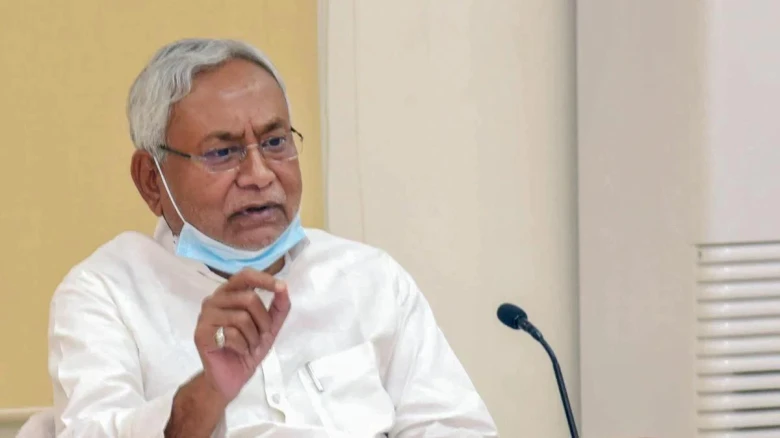The resignation came hours after Kumar reportedly stated in a meeting with party MLAs that the alliance with the BJP was "over" because the saffron party was "not showing respect" and "conspiring" against them.
Digital Desk: Bihar Chief Minister Nitish Kumar submitted his resignation to the state governor on August 9, after his Janata Dal (United) decided to sever ties with the ruling alliance partner, the Bharatiya Janata Party (BJP).
"As CM, I have resigned. There is consensus among JD(U) MPs and MLAs that we should withdraw from the NDA," Kumar spoke with reporters outside the Raj Bhawan.
The resignation came hours after Kumar reportedly stated in a meeting with party MLAs that the alliance with the BJP was "over" because the saffron party was "not showing respect" and "conspiring" against them.
After submitting his resignation, Kumar went to the residence of former chief minister Rabri Devi, where he is expected to start talks about creating a new government with the Tejashwi Yadav-led Rashtriya Janata Dal (RJD).
Approximately 160 MLAs are expected to support the alliance between Kumar and Yadav, according to RJD sources who spoke to news agency ANI. They stated that there will be "no differences in portfolio allocation." This happened not long after it was reported that Kumar's present portfolio, the home ministry, was Yadav's top priority.
The Congress and Left parties, which had opposed the 2020 alliance led by Yadav, were said to have promised their support to the JD (U) if it breaks with the BJP and forms an alternative government.
With 79 MLAs, the RJD is currently the single-largest party in the 243-member house. Congress has 19, the Left Front, led by the CPI (ML), has 17, and the JD(U) has 45 legislators.
The provision of jobs for the unemployed youth will be the next government's "top priority," according to RJD insiders who spoke to ANI. Notably, Yadav's main campaign platform in the 2020 assembly elections was the lack of jobs.
The JD(U) and RJD, two parties regarded as arch-rivals in Bihar politics, will be working together to form the government for the second time in seven years. In the 2015 assembly elections, the two parties and Congress together ran for office and established a coalition administration. But in 2017, Kumar parted from the grand coalition and rejoined the BJP.
The JD (U)-BJP-led coalition narrowly prevailed in the 2020 assembly elections, but Kumar's party saw a decrease in seats from 73 in the previous elections to 43. Later, after winning two byelections, the party increased its number of electoral victories to 45.
A section of the JD (U) claimed that the BJP had supported the Chirag Paswan-led Lok Janshakti Party (LJP) in order for it to actively compete against Kumar's party in the 2020 elections in an effort to lower its vote total.
The JD(U) leader, RCP Singh, was accused by a faction of the party of plotting to cause a split, which escalated already simmering tensions between the two parties. The BJP's state-level leaders had been accused of insulting the chief minister.
Last Monday, the party had requested Singh to provide information regarding his assets because it suspected irregularities. As a result, Singh resigned from the party and declared that Nitish Kumar would never become prime minister, even if he take seven births. He added that the party was a "sinking ship."
The JD(U) fired back, claiming that the party has identified the moles and is not a ship in trouble. "Two plots were recently hatched against Nitish Kumar, the first of which was the Chirag model of 2020, which resulted in the reduction of our Assembly's seats to 43. Another was about to emerge but was stopped in its tracks, Rajiv Ranjan Singh, head of the JD (U), said.

Leave A Comment